
views
Choose grass seed that thrives in your region.
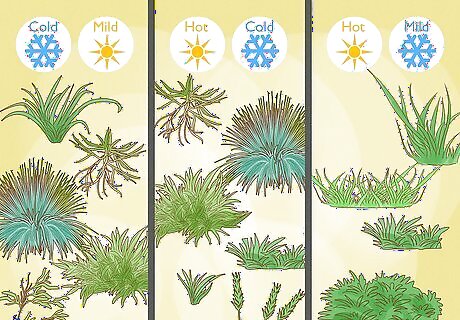
Check a grass zone map to determine if you need a cool, warm, or transitional variety. Buying a variety that's suited to your area's temperature really helps the grass seed germinate. You can even look for special varieties designed for sun-, shade-, or drought-tolerant regions. For instance, most shade varieties are a blend of grass seeds designed to grow with minimal sunlight. Here are a few grass varieties based on region to get you started: Cool region (cold winters and mild summers): ryegrass, Kentucky bluegrass, tall fescue, bentgrass Transitional region (hot summers and cold winters): Kentucky bluegrass, tall fescue, zoysiagrass, thermal blue, perennial ryegrass Warm region (hot summers and mild winters): Bermuda grass, buffalo grass, zoysiagrass, centipede grass Search for a grass zone map to see where your region falls. In general, most of the upper U.S. is the cool region, while the southernmost area is the warm region. In between these two areas is the transition region.
Wait until the temperatures are moderate.
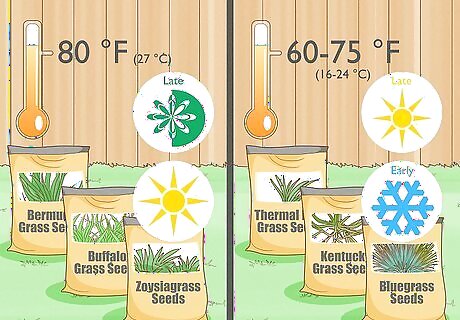
Plan to sow your grass seed when it has the best chance of germinating. If you're planting a warm-season variety, wait until the temperatures are around 80 °F (27 °C)—usually in late spring or summer. For a cool-season variety, plant when the temperatures are around 60 to 75 °F (16 to 24 °C)—usually in late summer or early fall. If you're in a transition zone, read the seed variety on the back of the package. It's either a warm or cool variety, so follow the manufacturer's instructions about when to plant it. Pay attention to your local forecast before you plant. You don't want to plant before a heatwave or period of frost is about to hit.
Test your soil's pH level.

Use a soil test kit to determine if your soil's within the ideal 6 to 7.5 pH range. You can buy a soil test kit from your local hardware or garden supply store. Collect a sample of soil and mix it with the test kit solution, or pour distilled water into your soil and insert a pH testing probe. Follow the manufacturer's instructions for either type of test. Then, wait a few minutes to read the results. If you're not up for testing the soil yourself, collect a soil sample and send it off to your county's extension office. For a fee, they'll test your soil and send you the results. If you're not concerned that your soil's pH is off, feel free to skip this step.
Amend the soil's pH if necessary.

Add a base material to bring up the pH, or add organic materials to lower the pH. If your soil is below 6, it means the soil is too acidic for grass seed. Mix powdered limestone or wood ashes into the soil. If the pH is over 7.5, it's too alkaline for grass seed. Mix peat moss into the soil to amend it. Test your soil again once you've made adjustments. If your soil's pH is way over 8 pH, it's very alkaline and you should probably try aluminum sulfate or sulfur. You can find these soil-amending products at most hardware stores, garden supply stores, or online.
Loosen the soil if the ground is compacted.

Dig up visible rocks and roots before you till the soil. If the ground is too hard, the grass seed will have a hard time growing. Take a shovel and remove rocks, stones, or large clumps of dirt. Then, put on safety glasses and run a rotary tiller through the area to break up and loosen the soil. If you'd like to remove old sod before you sow grass, rent a sod cutter. Cut through the sod, roll it up, and remove it before you loosen the now-exposed soil.
Grade the soil.

Rake the area smooth and run a lawn roller over the soil to make it level. Take a heavy garden rake and drag it from high or sloped parts of the soil over to low spots or dips. Then, fill a cylindrical lawn roller with water and roll it across the area to smooth out the surface of the soil. If the soil is very clay-heavy, add about 1 inch (2.5 cm) of sand across the entire planting area before you rake it. The sand helps with drainage and causes the soil to dry out faster. If you don't have a lawn roller, you can simply rake over the area. A lawn roller is useful if you're trying to grow grass over an area that has molehills or deep ridges in the soil.
Spread the grass seed over the soil.

Walk across the soil and use a drop or rotary spreader to scatter the grass seed. If you're sowing a small space, pour the grass seed into a handheld spreader and crank the handle as you walk. If you've got a large area, use a walk-behind spreader. This looks like a bucket on wheels that distributes the seeds as you push it. It's better to use too little grass seed than too much. If you put too much grass seed down, the seedlings will have to fight for nutrients and you'll end up with thinner grass.
Spread fertilizer over the area.
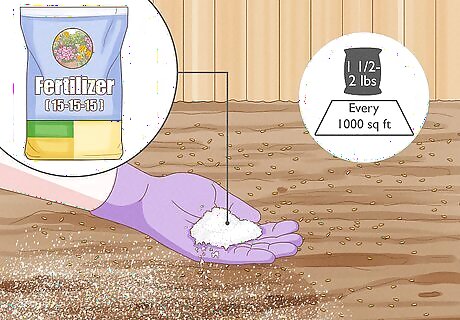
Scatter fertilizer that's high in nitrogen (N) like 15-15-15 fertilizer. Although the fertilizer won't make the seeds germinate faster, the nitrogen can stimulate growth once the seedlings appear. This helps establish the grass. You can also use a high-nitrogen fertilizer that contains phosphorus or potassium like 24-4-12—these also support grass growth. Plan on spreading 1 ⁄2 to 2 pounds (0.68 to 0.91 kg) of nitrogen fertilizer for every 1,000 square feet. It's a good idea to wear protective gloves when handling the fertilizer. If you've got a friend helping you, one of you can sow the grass seed while the other spreads the fertilizer.
Cover the grass seed with organic material.

Spread a thin layer of topsoil, straw, or peat moss over the seeds. You could also spread a light layer of sawdust or compost. These organic materials prevent the grass seeds from blowing away. It can also prevent weeds from popping up! Don't spread more than ⁄4 inch (0.64 cm) of material since you don't want to make it hard for the seeds to sprout.
Water the newly-seeded lawn every day.

Water the area for 5 to 10 minutes 2 to 3 times a day. To protect the seeds from washing away, use a fan or oscillating-style sprinkler. Keep up this daily watering schedule for about 8 to 10 days. When the grass starts sprouting, just water the area once a day for 15 to 30 minutes. Water in the morning since less moisture evaporates early in the day.
Protect the newly-seeded lawn.
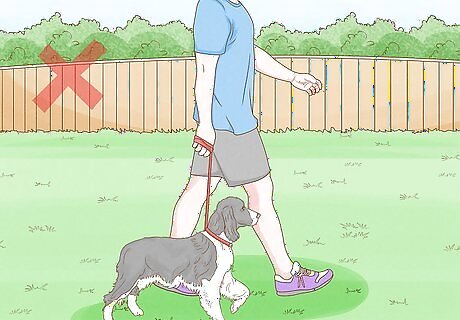
Keep people and pets off the soil for at least 4 weeks. The grass seeds and sprouts are fragile when they first start growing, and if people or pets step on them, the pressure stunts the growth. To protect your new grass, put up a sign or yard flags, rope off the yard with string, or erect a temporary fence. Ideally, you'll wait as long as you can, so the grass seed really gets a chance to grow.
Wait to mow the new grass.
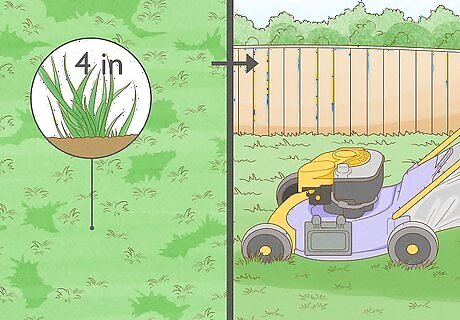
Wait 2 months or until the grass is 4 inches (10 cm) tall before you mow. You might be tempted to mow the area once your grass is a few inches tall, but give it some more time. Not all of the grass seed germinates at the same time, so you don't want to prematurely cut grass that's still too short. Adjust the blade on your lawnmower, so you only cut 1/3 of the grass height.



















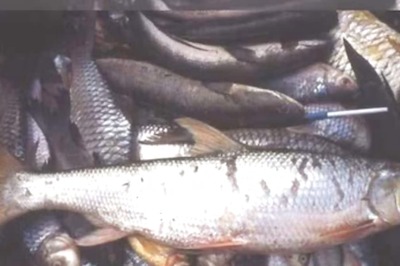
Comments
0 comment